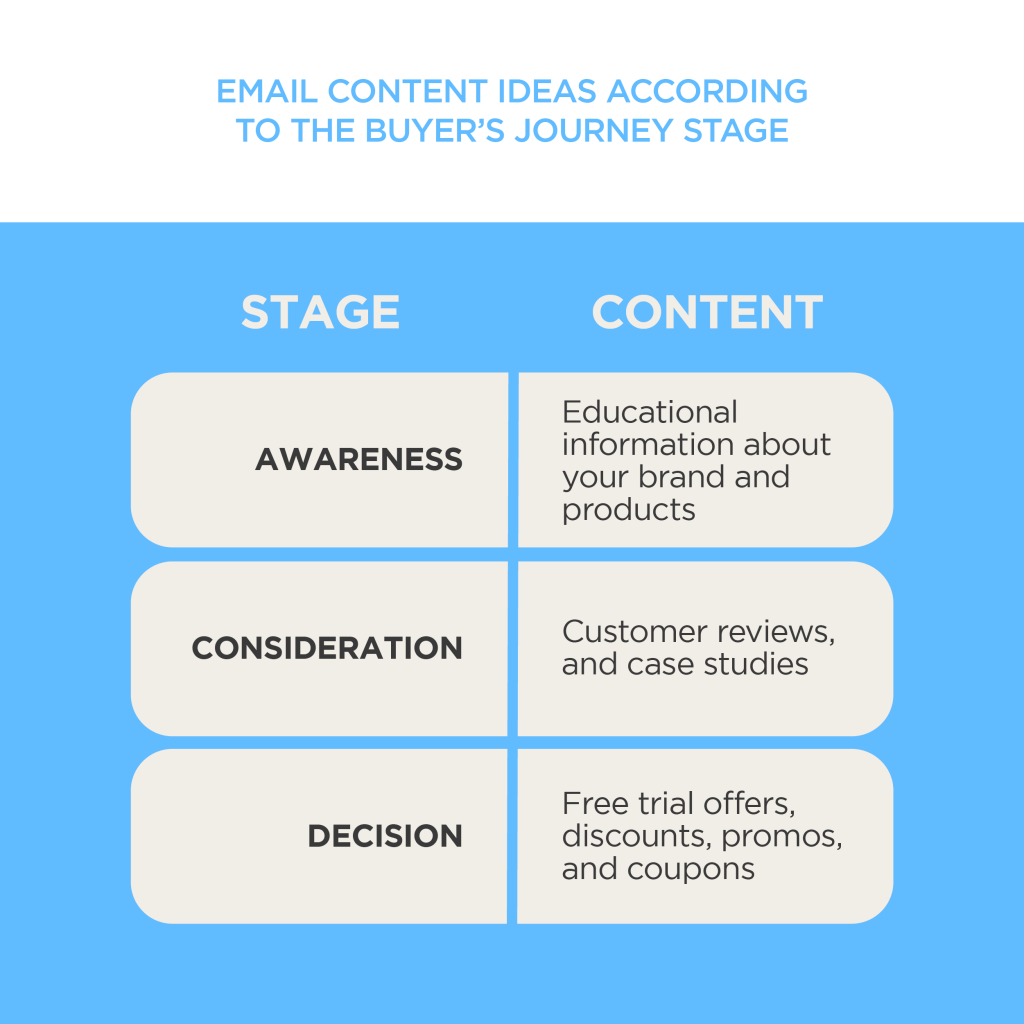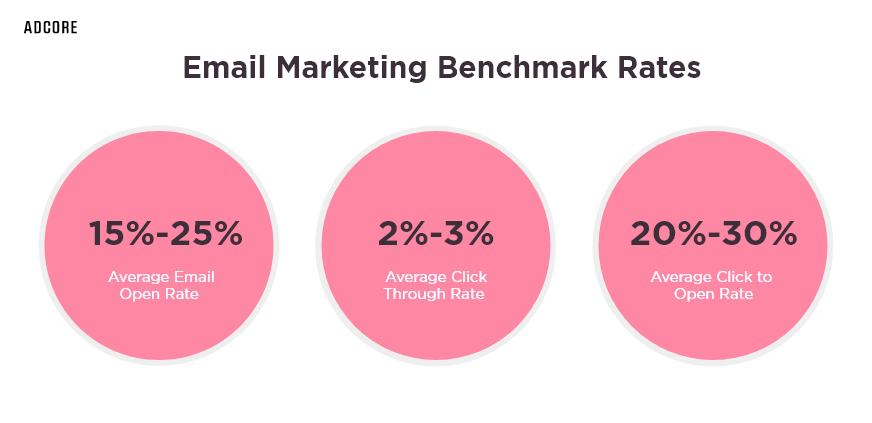Getting Started with Personalized Email Marketing
Out of the 306.4 billion emails that are being sent out on a daily basis, 55% of them will be marked as spam and will never reach their destination.
Having said that, five decades after the first email was sent out, it still continues to outperform all other channels, but how?
According to Forbes magazine, marketers report a 760% (!) increase in email revenue when they start mailing personalized messages. It makes sense, as in today’s environment we are being bombarded on a daily basis by all kinds of information, we only have time for things we find relevant to us, hence in order to unlock the true magic behind your contact list, you need to find a way to engage with your clients on a much more personal level.
So…. let’s get personal
Sending a personalized email is all about interacting with your audience and customers in a way that feels personal and human, taking into consideration their likes, preferences, and interests. If you have 10 subscribers on your list, it’s an easy task but if you have 100 it will become impossible right?
Well… It’s actually easy, it’s just a little magic called “email automation”.
If you are unfamiliar with the term, email automation is the process of sending automated emails or email series in response to predefined trigger conditions. These triggers can be related to a certain date of the month or user behavior on your site. By using email automation platforms you are able to create and send emails that will actually hit their target.
From conversations with our clients, I’ve learned that although many online marketers are familiar with the terms and technologies that are out there, they are not quite sure where and how to start.
In order to help you out, I gathered below 5 easy steps to start planning and executing your first personalized email campaign.
Getting Started with Personalized Email Marketing
Know Your Audience – Tidying Up Your List
In order to create high-performing personalized email campaigns, it is essential to first understand your mailing list. Start by consolidating your lists into one. This will make it easier for you to understand what kind of data your organization is currently tracking and storing. Next, look for common traits that will help you to segment your audience for future personalization such as:
- Location
- Job title
- Age, birthday dates if possible
- Industry
- Products or services that they purchased
- Products or services they were interested in but didn’t purchase
As GDPR’s rules may differ from country to country it’s critical to not only identify where your contacts are located but to also make sure you have your contacts permission to mail them.
Lastly, understand how many contacts your list actually contains. A lot of organizations tend to collect and store misleading, incorrect, or duplicate data. As most of the email automation platforms will be basing their pricing depending on your lead base size, it’s critical to make sure every contact on your list is unique and has a valid email address.
Don’t get intimidated if by the end of this process your total subscriber list will be lower than what you expected. It’s not about the quantity, it’s about the quality.
Pro tip: use tools like email list verify or Zerobounce that can help you to quickly remove duplicated records and identify inactive email addresses.
Pro tip 2 – the size doesn’t matter. or at least matters less than the quality of your mailing list. Many companies, (including us at first), gather an enormous amount of emails, which have little relevance to the business.
Don’t be afraid of unsubscribers! On the contrary, at first, it’s a good sign those irrelevant users are eliminated from your list.
Map your buyer’s journey
Personalized emails are all about delivering the right message at the right time. A client might get disappointed to receive an update about an upcoming sale a minute after he completed a purchase on your site. In order to be able to deliver highly personalized emails, you will first need to identify your potential buyer’s journey.
A classic model will include 3 steps:
Awareness – The potential buyer realizes that he has a need or a problem he needs to solve. In this stage, he will start to look for general information
Consideration – The potential buyer now has more understanding and knowledge about their need or problem and are now starting to evaluate potential solutions
Decision – The potential buyer is now ready to buy. He might be seeking information that will help him to choose the right brand or company out of the options that are available for him.
In order to get you started, you can use this classic model, but as each product or service is different, your buyer’s journey may include more steps or a different one. If you find this stage to be difficult, HubSpot has some great free tools and tips that can help you in your brainstorming process.
These days our inboxes are being constantly bombarded with all kinds of information so, how can your emails stand out in the crowd?
Creating personalized funnels
Once you have your journey mapped, it’s time to ask yourself what kind of information your prospect will find useful according to the position in his journey and what behaviors on your site can indicate it. According to your findings, start to plan out your funnels.
Below are examples of our classic models from before with content ideas to mail out according to your prospect stage, and funnels examples to with it.

Pro tip: Your website probably already has some content like blogs posts, case studies, and client reviews that you can use. Audit your site and think which content can be addressed to a specific pain point and may fit a specific stage of your buyer’s journey.
Pro tip 2: While you can always use a pen and piece of paper to sketch down the different stages of your buyer’s journey, there are some great tools out there that can help you visualize the process. My personal favorite is Lucidcart.
Choose the Right Platform
There is a wide range of email automation tools and services out there, each one has its own pros and cons. While every business has its own unique needs, there are some key factors to consider before making the decision
The CRM you’re currently using – or not
When getting started with automated email campaigns, CRM software will become your BEST friend. If your company already has a CRM tool in place make sure to choose a platform that can offer seamless integration. If your company still uses Google Sheets or Excel, look for platforms that can offer you CRM solutions on top of email automation.
Your growth forecast – allow yourself room to grow
As explained earlier, email marketing platforms will base their quote on your lead-size base.
Your first instinct might be to choose the tier that best fits your current situation, but when choosing the right plan, take your growth forecast into consideration. It will help you to avoid unexpected costs. Another aspect to take into account is the number of emails you expect to deliver.
A/B testing and reporting features
This is critical, without the ability to A/B test and review the performance of your campaigns, you simply won’t be able to improve and scale up. Make sure that the platform you are choosing is able to give you insight into the following matrix:
Open rate
Click rate
Reply rate
Unsubscribe rate
Bounce rate
Design tools and templates
If your brand demands strict guidelines that need to be followed in your communications or if you already have some amazing templates you wish to use, don’t forget to check if the email builder that the platform is offering will allow you to create or import the design you wish to use.
Analyze your results and optimize for success
Congratulations, if you reached this section I assume you managed to plan out and execute your first personalized email marketing campaign.
Although this is the final stage, it’s the most important one, you won’t be able to scale up or truly succeed without analyzing and optimizing your results.
These are the three most important metrics to measure your email marketing performance:
1. Open Rate – the percentage of people who opened your email out of the people who delivered your email.
2. Click-Through Rate – the percentage of recipients who clicked a link in your email out of those who opened it
3. Click-to-Open Rate– the percentage of unique recipients who clicked a link in your email out of those (unique) who opened it
Take a look at the benchmark rates of these metrics to get a sense of how your emails should be performing:

So let’s say that according to the report, your click rate is 42.59%.
Quite amazing right? Well, it depends on your industry. So before making drastic moves, make sure to check out what is the average for your industry.
Want to learn more about email marketing? Get in touch with one of our experts!
PPC Marketing Expert?
Get things done with Adcore Marketing Cloud.
5 essential PPC tools under one roof.
Related Articles

